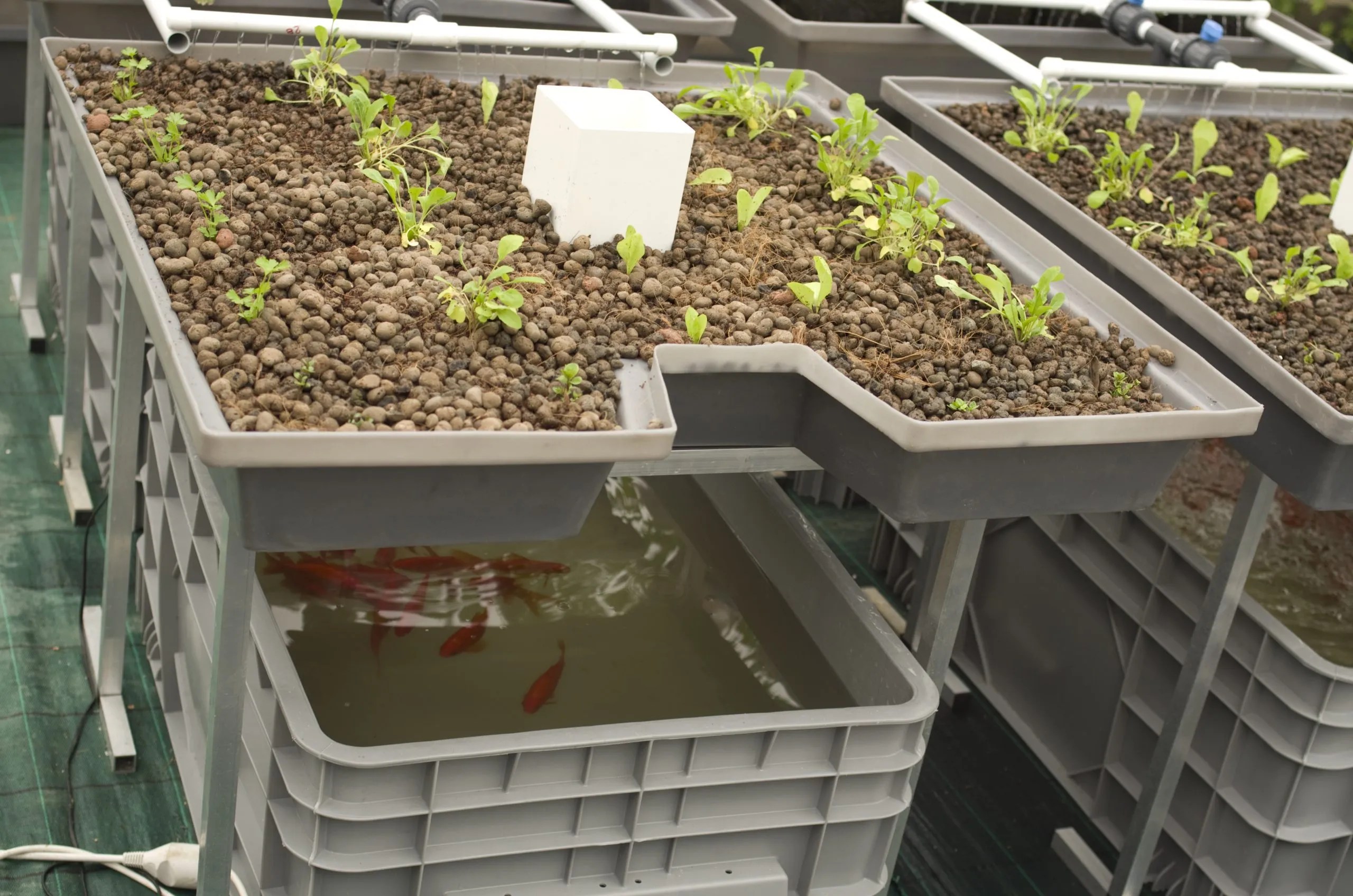/GettyImages-142873284-7afec7706c2a4997841bde2792c7ff6b.jpg) www.treehugger.com
www.treehugger.com Opening: Embracing Sustainable Gardening with DIY Aquaponics Aquaponics, the symbiotic combination of aquaculture (raising fish) and hydroponics (growing plants without soil), offers a fascinating and sustainable way to produce fresh food. Building your own aquaponics system can seem daunting, but with careful planning and these step-by-step instructions, you'll be harvesting delicious vegetables and raising healthy fish in no time. This guide focuses on a simple raft system, ideal for beginners.
Step 1: Gathering Your Materials Before you begin, it's crucial to assemble all the necessary components. This will save you time and frustration later on. Fish Tank: Choose a food-grade plastic container or an aquarium. A 50-gallon tank is a good starting point. Grow Bed: A shallow container that will hold the water and raft, slightly smaller than the fish tank. Grow Raft: A sheet of polystyrene foam cut to fit the grow bed. Air Pump and Air Stone: To oxygenate the water for the fish. Water Pump: A submersible pump to circulate water from the fish tank to the grow bed. Plumbing: Tubing to connect the fish tank, pump, and grow bed. Grow Media: Clay pebbles or rockwool cubes to support plant roots. Fish: Choose a hardy and edible species like tilapia or goldfish. Seeds or Seedlings: Select plants that thrive in aquaponics, such as lettuce, herbs, or leafy greens.
Step 2: Assembling the Fish Tank and Grow Bed Now, let's put the basic structure together. Place the fish tank on a level surface in a location that receives adequate sunlight (or artificial grow lights). Position the grow bed above the fish tank. You can use cinder blocks, shelving, or a custom-built stand. Make sure it is stable and can hold the weight of the water and grow media. Cut a hole in the grow bed to fit the inlet tube. Place the grow raft inside the grow bed.
Step 3: Plumbing and Water Circulation Connecting the water system is essential for the aquaponic cycle. Place the water pump in the fish tank. Connect the pump to the inlet tube leading to the grow bed. Create an outlet tube in the grow bed to return water to the fish tank. Ensure it's positioned so that it provides proper drainage and prevents overflow. A simple siphon or a drilled hole with a connector will work. Fill the fish tank and grow bed with water. Test the pump and ensure water is circulating properly between the tank and the bed.
Step 4: Setting Up the Aeration System Oxygen is vital for the fish's survival. Place the air stone in the fish tank. Connect the air stone to the air pump. Turn on the air pump and verify that bubbles are being produced in the fish tank.
Step 5: Planting and Cycling the System Before adding fish, the system needs to be "cycled" to establish beneficial bacteria. Add a small amount of ammonia to the fish tank (fish food decomposing works as well). This will kickstart the nitrogen cycle. Monitor the ammonia, nitrite, and nitrate levels in the water. You'll need a water testing kit. Once the ammonia and nitrite levels reach zero and nitrate levels are present, the system is cycled. This process can take several weeks. Plant your seedlings or seeds in the grow media and place them in the holes in the grow raft.
Step 6: Introducing the Fish Carefully introduce the fish to their new environment. Acclimate the fish to the water temperature by floating the bag they came in the fish tank for about 30 minutes. Gradually add water from the fish tank to the bag before releasing the fish. Start with a small number of fish and monitor their health closely.
Step 7: Maintaining Your Aquaponics System Regular maintenance is crucial for a thriving aquaponic system. Test the water regularly (pH, ammonia, nitrite, nitrate levels) and adjust as needed. Add water as needed to compensate for evaporation. Clean the fish tank and grow bed periodically. Feed the fish a high-quality fish food. Monitor the plants for pests and diseases.
Conclusion: Enjoying the Fruits (and Vegetables) of Your Labor Building your own aquaponics system is a rewarding experience that allows you to grow fresh food sustainably. With consistent care and attention, you'll be enjoying delicious vegetables and healthy fish from your own backyard. Remember to research and adapt the system to your specific environment and needs. Happy aquaponics gardening!
Component Of Aquaponics Systems
 www.aquaponicsforbeginners.com
www.aquaponicsforbeginners.com 20 Best Plants For Aquaponics
/GettyImages-142873284-7afec7706c2a4997841bde2792c7ff6b.jpg) www.treehugger.com
www.treehugger.com Aquaponics-what Is Aquaponics And How Does It Work?
 agromoris.com
agromoris.com
0 komentar:
Posting Komentar